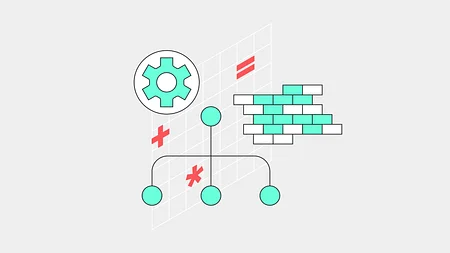Tried and tested org design: learnings to help you find the right strategy

Good working culture is impossible without motivation. Therefore, it is essential to follow a model of organisation design that supports the conditions in which motivation can be maximised.
Org design should be invisible - only when it starts to impact mastery, autonomy and purpose does it become noticeable, and it’s time for change. Divisional structuring and matrix management are two attempts to resolve the issues posed by a functional hierarchy that we saw in my last piece.
Org design should be invisible
Divisional structure
In the divisional approach, employees are grouped together based on a common business area. Divisions are multidisciplinary and everyone is aligned around the same set of priorities. It’s clear what needs to be done, who can make certain decisions and access to all required skill sets is readily available. However, there are a number of drawbacks. For example, do you create an IT department for each division? Whilst that would lead to a service perfectly tailored for each division, it’s not always logistically possible. The risk of divisions becoming self-contained organisations is never far away; the parent organisation can grow to resemble a group of companies rather than a unified firm.
In an effort to solve these issues, it is not uncommon to see a blend of functional and divisional structures within a company. In this approach, divisions are supported by a set of enabling functions, such as IT, finance, people and legal, which are sometimes grouped into an operations division under a COO. Often, this leads to under-resourced enabling functions which can create tension.
Matrix management
In matrix management, people are grouped by specialism and report to a head of function. At the same time, they are embedded within multidisciplinary project or product teams to deliver value. Whilst this seems to combine the best of both worlds, matrix implementations are bespoke and tend to be complex. They are also subject to frequent restructures as the business side of the matrix reconfigures around changes in the market.
Within this complexity, the limits of individual decision-making power are often poorly defined. Lack of clarity leads to problems at both ends of the spectrum: it is much easier for people to ‘go rogue’ compared to traditional hierarchies. On the flipside, it’s also much easier to be paralysed by indecision due to fear of blame.
Beyond the individual level, the primary problem with matrix management comes down to a lack of clear decision-making authority and associated escalation pathways. Functional managers and business leads have the same amount of power as each other, but often radically different agendas. Business leads prioritise the bottom line, whereas functional leads prioritise discipline-centred excellence.
The Spotify effect
Spotify turned heads when they introduced a management framework that solved a lot of issues associated with matrix management. Often incorrectly referred to as a model in its own right, the Spotify pattern was designed with very specific and contextual issues in mind - blindly following it does not promise the same success.
In this pattern, leadership is separated into ‘what’ and ‘how’ domains. The former refers to what value the organisation is creating for its customers, whilst the latter is where discipline-centred excellence belongs. Skill sets such as UX, engineering, design and marketing are grouped into ‘chapters’, which are headed up by a lead.
In Henrik Kniberg’s view, this approach creates a ‘healthy tension’ between business and chapter leads - dubbed ‘product champions’ and ‘professors’ respectively. Product champions want to deliver a great product as quickly as possible, whilst professors want to be studious and careful. Critically, leaders’ decision-making authority is now restricted to their domains, maintaining the healthy tension.
So, Divisional or Matrix?
Sadly, the answer isn’t that clear-cut. Both the divisional and matrix models of organisation design have their share of issues. The solution may lie in adopting a Scaled Agile Framework, which potentially solves a lot of the issues associated with both models.
There are a number of different frameworks adhering to the agile philosophy and acting as a model for scaling digital organisations. Amongst them, SAFe and LeSS are two of the most noteworthy.



